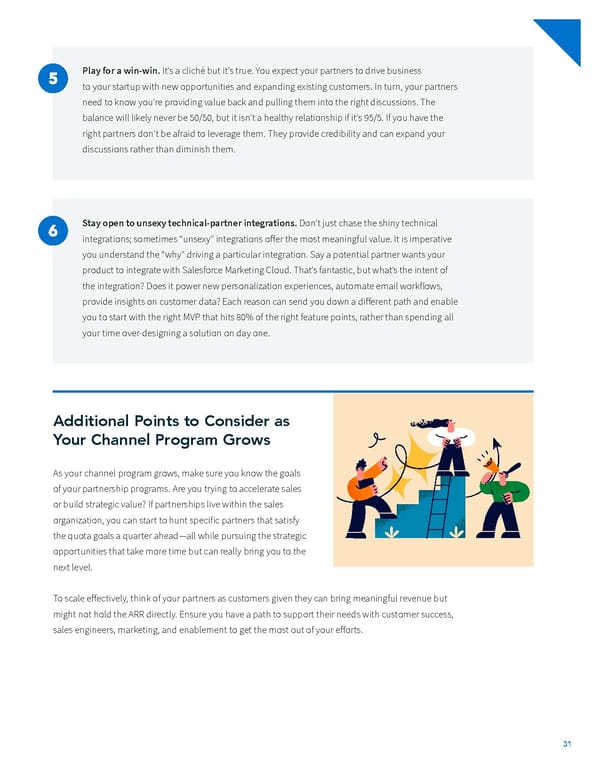Play for a win-win. It’s a cliché but it’s true. You expect your partners to drive business to your startup with new opportunities and expanding existing customers. In turn, your partners need to know you’re providing value back and pulling them into the right discussions. The balance will likely never be 50/50, but it isn’t a healthy relationship if it’s 95/5. If you have the right partners don’t be afraid to leverage them. They provide credibility and can expand your discussions rather than diminish them. Stay open to unsexy technical-partner integrations. Don’t just chase the shiny technical integrations; sometimes “unsexy” integrations offer the most meaningful value. It is imperative you understand the “why” driving a particular integration. Say a potential partner wants your product to integrate with Salesforce Marketing Cloud. That’s fantastic, but what’s the intent of the integration? Does it power new personalization experiences, automate email worklfows, provide insights on customer data? Each reason can send you down a different path and enable you to start with the right MVP that hits 80% of the right feature points, rather than spending all your time over-designing a solution on day one. Additional Points to Consider as Your Channel Program Grows As your channel program grows, make sure you know the goals of your partnership programs. Are you trying to accelerate sales or build strategic value? If partnerships live within the sales organization, you can start to hunt speciifc partners that satisfy the quota goals a quarter ahead—all while pursuing the strategic opportunities that take more time but can really bring you to the next level. To scale effectively, think of your partners as customers given they can bring meaningful revenue but might not hold the ARR directly. Ensure you have a path to support their needs with customer success, sales engineers, marketing, and enablement to get the most out of your efforts. 31
 Guide to Breaking into the Enterprise Market Page 30 Page 32
Guide to Breaking into the Enterprise Market Page 30 Page 32